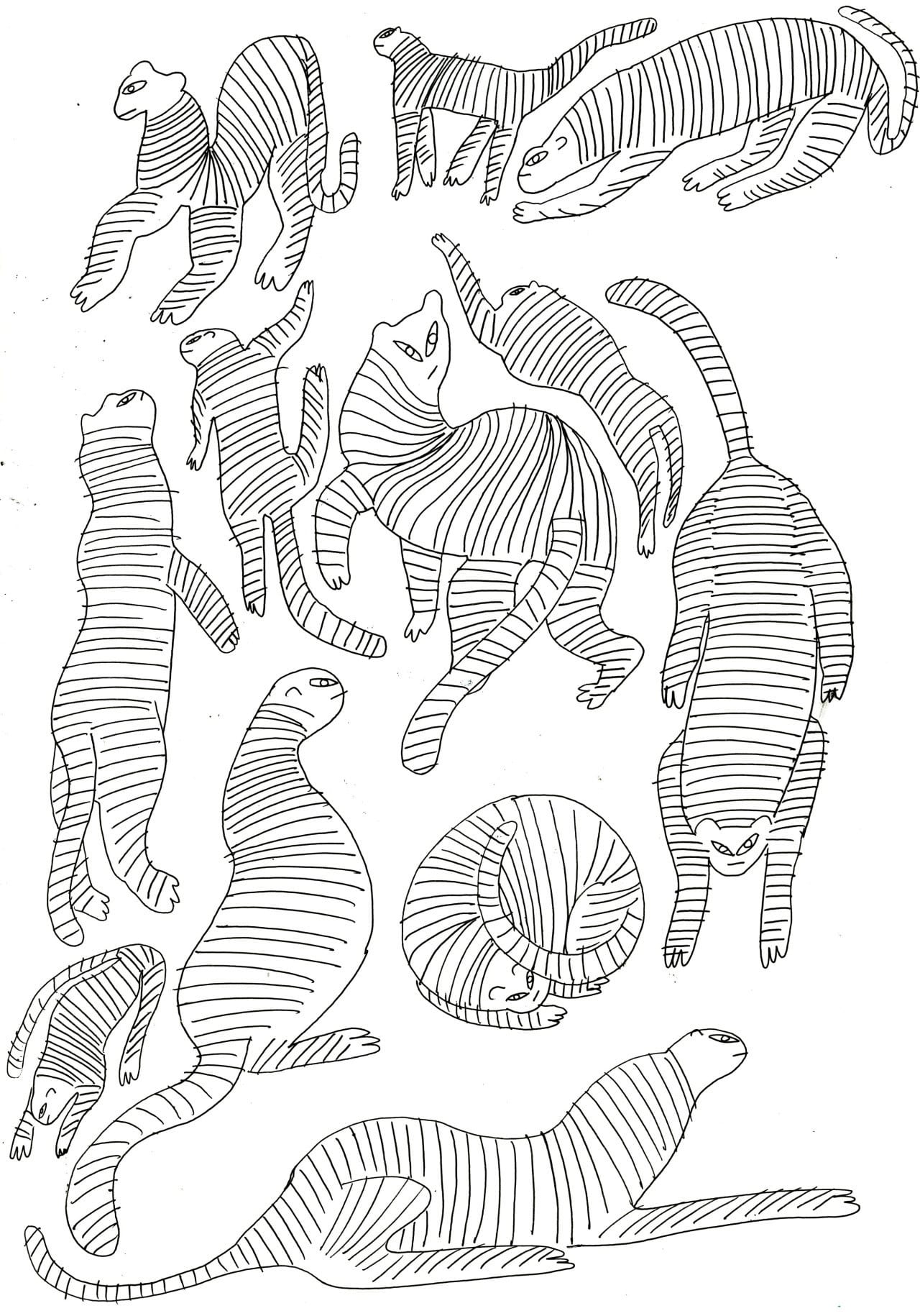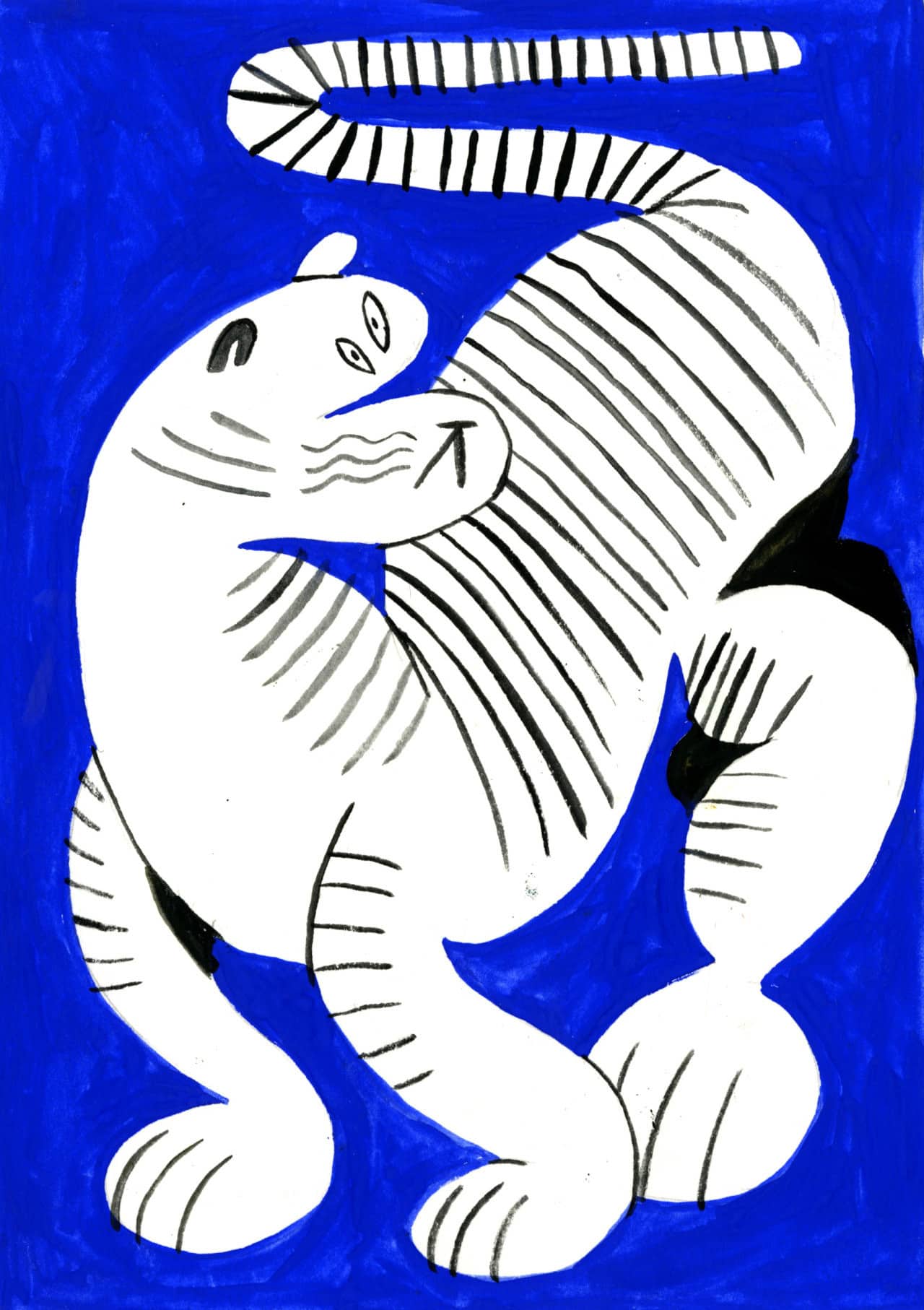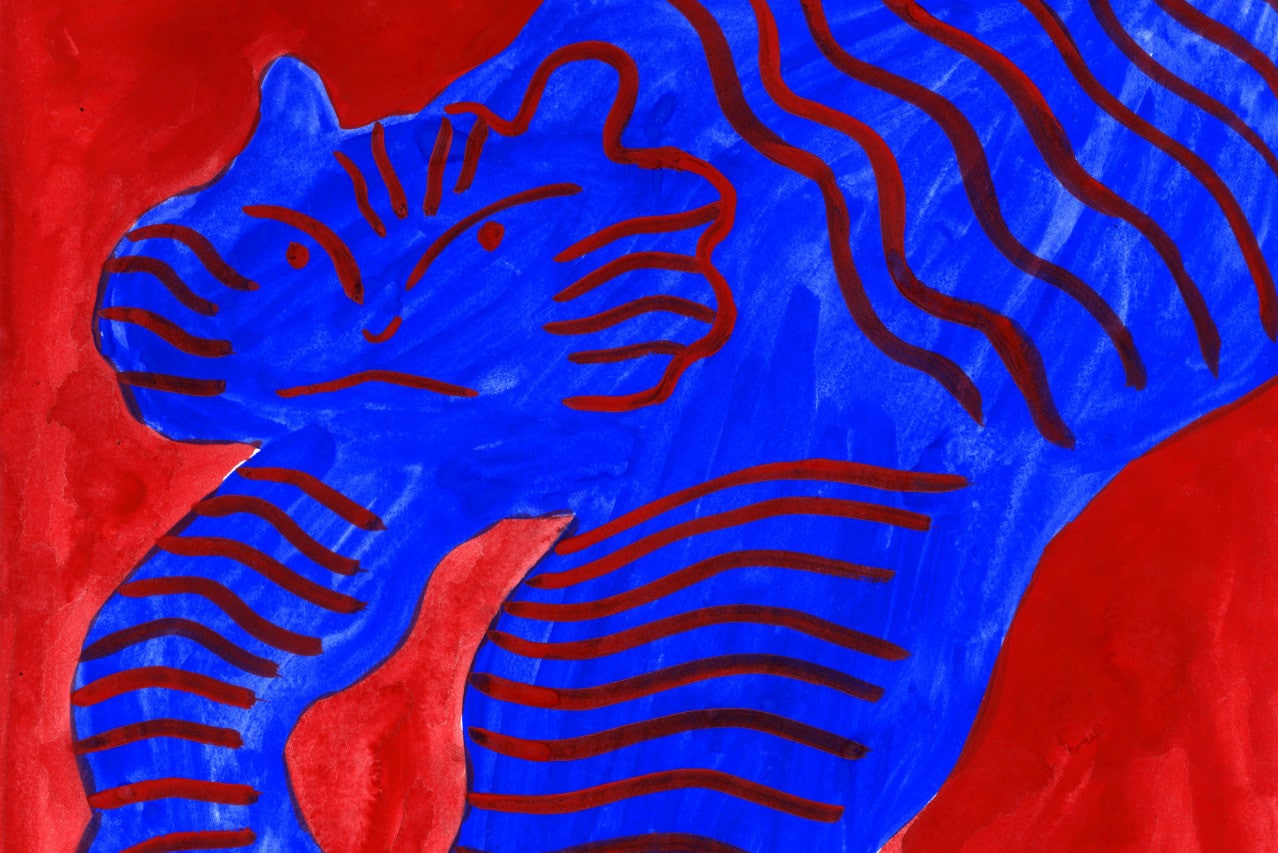Curious about how repetition might change her style, illustrator Molly Fairhurst decided to embark on the strange and ambitious creative project of drawing 1,000 tigers.
The British illustrator was inspired by outsider art, a genre of work typically made by those who lack formal art training or artists outside the recognized art establishment. It’s often characterized by a naive style and repeated explorations of a single theme. As an art student who’s participated in shows and been recognized by publications like It’s Nice That, Fairhurst knows that she’s far from an outsider artist. The aim of this project was “not to pretend to be an ‘outsider,’” she says, “but just to see how it would affect what I did.”
In her studies of the genre, Fairhurst found that outsider art was often made under conditions of “isolation, anonymity, and repetition.” Many outsider artists work in private, whenever they have free time, creating detailed and complex personal worlds within works they never show to anyone.
The concept of outsider art as an idiom originates with the French term art brut (“raw art”), which was coined by the artist Jean Dubuffet in the 1940s to describe art existing outside the academic conventions of typical fine art. Rather than a reaction to the limits of the art world, outsider art exists parallel to and largely unaffected by the establishment. Many outsider artists, like the American custodian Henry Darger, are known for their complex fantasy worlds; others, like the Cornish fisherman Alfred Wallis, have oeuvres which explore everyday themes in a repetitive way. Fairhurst’s repeated tigers call to mind Wallis’s simple yet captivating seascapes, which he often painted on old pieces of cardboard.
“For a couple of months I secretly worked on this personal, oftentimes self-indulgent, project—repeatedly drawing and painting and making under one theme. As someone who frequently discusses and posts their work online, it was different but freeing to just keep this under wraps,” Fairhurst says. “There was less pressure to conform to what I was already doing, which gave way to working free-er, and more experimentally. Some of the things I found myself doing in this project continue to lend themselves to what I’m doing today, particularly in regards to drawing silly figures and forms.”
Fairhurst only ended up making 132 tiger drawings in total. Nevertheless, there’s a clear sense of creative freedom in the series. Fairhurst’s style varies widely as she experiments with different media, ranging from simple pencil scribbles to surreal, vivid forest scenes. The forms of the tigers also shift and change. Some are realistic sketches, while others are anatomically bizarre creations reminiscent of balloon animals. In all, the project is a testament to the way limitations can sometimes increase rather than limit creativity.
See more of Molly Fairhurst’s illustration on Instagram and at her portfolio, built using Format.
You can find Fairhurst’s full collection of tiger drawings here.


















Check out more illustration galleries on Format:
Illustrator Riikka Laakso’s Modern Take on Folk Art
Patrick Kyle’s Minimal, Deceptively Complex Illustrations
Felix Treadwell’s Cartoon Paintings Capture Coming-of-Age Boredom












